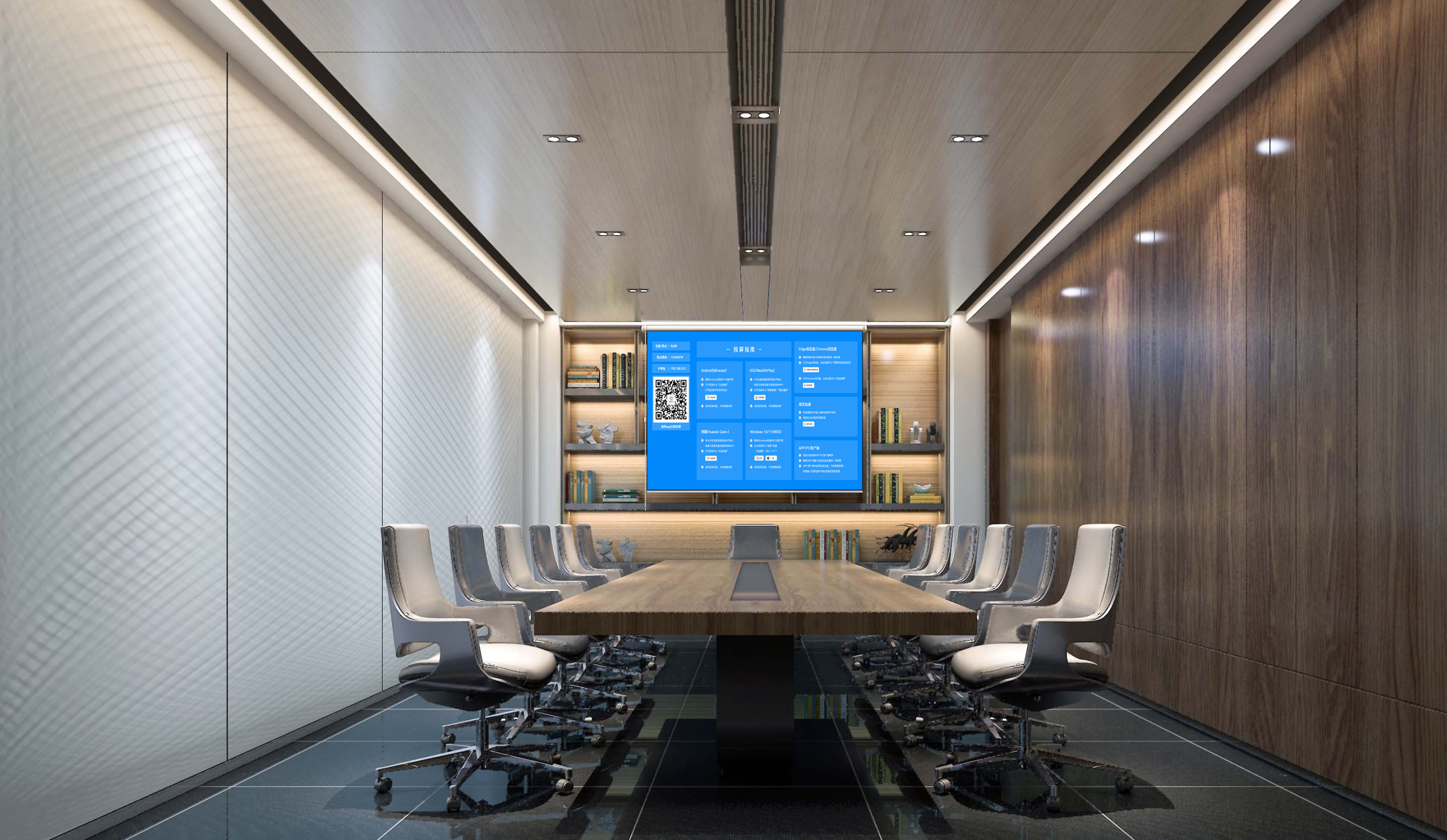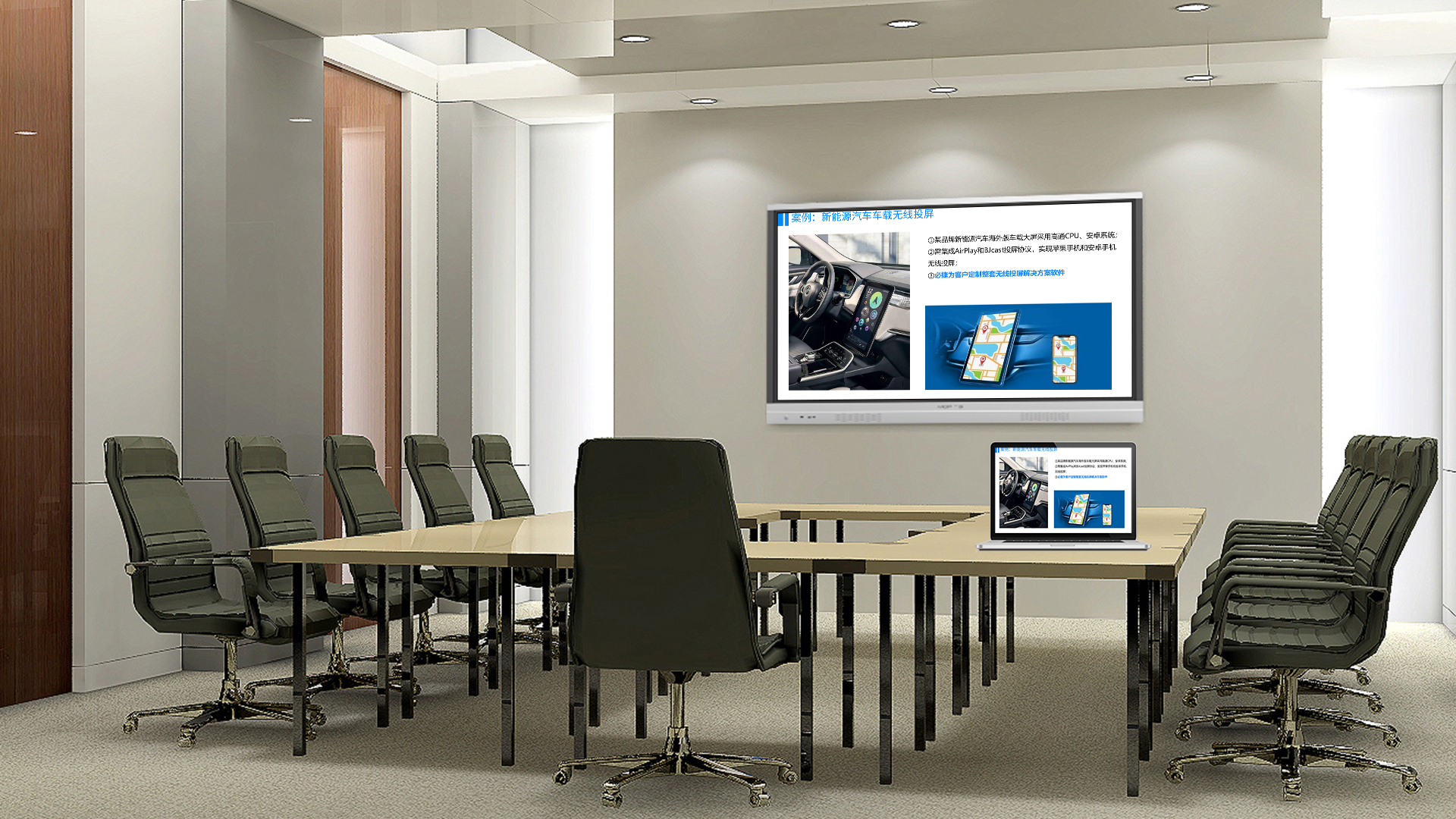Use This for DLNA: More Flexible Classroom Mirroring for Windows Devices
Do you have a smart classroom with mainly Windows devices and want to push media without tying up your screen? This screen mirroring device is deeply compatible with the native DLNA protocol! Without having to mirror your whole screen, you can push only the lesson plan or the audio or video you want to a large screen while using your Windows device for other tasks. This makes sharing teaching materials more efficient and activates the educational value of the Windows ecosystem.
2-Step Connection: No Learning Curve for Teachers and Students
It perfectly fits how Windows devices operate, so you’ll know how to use it right away:
- Quick Hardware Setup: Plug the receiver into the smart board or the main classroom screen. After it’s powered on, the large screen will show a dedicated DLNA name (e.g., “11th Grade Class 5 DLNA Screen”). Connect your Windows device and the mirroring device to the campus Wi-Fi. There’s no need to install any drivers or plugins.
- Native Push: On a Windows computer, select the lesson plan, video, or other material you want to share. Right-click and select “Cast to Device.” Choose the name of the large screen that corresponds to the mirroring device. The content will be pushed in 1 second and will start playing on the large screen, while your computer is free for other tasks.
Core Advantages: More Efficient DLNA Pushing for the Windows Ecosystem
Native Compatibility: No Device Is Left Behind
- Universal Model Compatibility: It perfectly supports Windows 7+ and works with mainstream laptops and desktops from brands like Lenovo, HP, and Dell. The compatibility rate for older educational computers and new high-performance models is over 95%, so you’re not limited by your device model.
- Lightweight and Software-Free: There’s no need to install any extra teaching software on your Windows device. It directly uses the system’s DLNA function, which prevents software conflicts and saves memory, meeting the need for stability and simplicity in a teaching environment.
- Compatibility with Windows Software: When you’re editing a lesson plan in PowerPoint or WPS, you can use the “Share” function to start a DLNA push. When you’re playing an experimental video with PotPlayer, you can push it to the large screen with a single tap, and the playback controls will be synchronized with your computer.
Flexible Targeted Pushing: More Controllable Teaching Pace
- Precisely Push in Sections: A teacher can split a lesson plan on their Windows computer into modules like “Theory,” “Experimental Video,” and “Class Questions.” They can use DLNA to push each section to the smart board. After they’re done with one section, they can push the next one, which keeps students from getting ahead. When they push an audio recording, they can push it separately to the classroom speaker to show the audio and video on different screens.
- Free Up Your Device: After a teacher pushes a lesson plan to the large screen, they can edit supplemental materials or look up reference documents in the background on their Windows computer. They don’t have to give up other functions on their device just to mirror their screen. When a student uses their Windows tablet to push their homework to the group’s secondary screen, they can take notes at the same time, boosting multi-tasking efficiency by 40%.
- Universal Format Compatibility: It supports mainstream formats like PPT, PDF, MP4, MKV, and JPG. There’s no need to convert a teaching material’s format on a Windows device. Just select it and push it. It plays smoothly with no lagging and is a great fit for 99% of teaching scenarios.

All-Scenario Compatibility: Windows Devices Empower Smart Classrooms
Daily Teaching: More Engaging Content Delivery
- In a Chinese class, a teacher can use a Windows computer to push a recording of a text to the speaker with DLNA and push the illustrations from the text to the large screen at the same time. The combination of audio and visuals will boost comprehension. In a math class, a teacher can push a geometric animation to the large screen, while they get the questions ready in the background on their computer. As soon as they finish explaining, they can push the questions.
- In an English class, a teacher can push a listening exercise to the large screen. The Windows computer can show the transcript at the same time. The teacher can use an annotation tool to circle keywords when they pause, making their explanation more precise.
Practical Training: Clearer Demonstrations
- In a practical training class for auto repair or electrical mechanics, a teacher can use a Windows computer to push a video of a device being taken apart or a circuit diagram to the large screen with DLNA. It supports slow motion and freezing frames. The teacher can open a circuit diagram document on their computer and switch between the two whenever they want, which brings theory and practice closer together.
- In a design class, a teacher can push a video of the PS design steps to the large screen. They can have a folder of materials open in the background on their Windows computer. A student can follow the steps in the video, and when they need to add more materials, the teacher can push them with a single tap, which makes the lesson flow more smoothly.
Discussions: More Efficient Result Sharing
- In a group project, each group can use a Windows computer to push their research report to the group’s secondary screen with DLNA. After they get feedback from their peers, they can push the polished version to the main screen. The teacher can select excellent work and push it to the main screen. The other groups can annotate their feedback on their computers and push it to the main screen with DLNA. This makes cross-group exchange more direct.
- For a public class, a remote expert can use a Windows computer to push their feedback to the large screen with DLNA. At the same time, they can push a case study for reference, which complements the lesson content. This makes the discussion more in-depth.
Secure and Stable: Peace of Mind for Campus Use
- Strict Permission Control: It works with the campus smart system, so only the teacher and students in the class can connect with DLNA. It also supports setting a whitelist for pushing to prevent irrelevant content from interfering.
- Stable Transmission: It uses dual-band transmission technology, so when multiple Windows devices are pushing at the same time, latency is less than 20ms, and the disconnection rate is less than 0.1%. A public class or a live broadcast won’t be interrupted.
- System Updates: The mirroring device regularly synchronizes with Windows system updates, ensuring that the DLNA function runs smoothly with new Windows versions. There’s no need for manual debugging.
- Portable: The mirroring device is only the size of a palm and weighs less than 40g. A teacher can easily put it in a computer bag for an outdoor study session and set up a screen pushing environment anywhere.
By using this mirroring device to activate the DLNA function, Windows computers can achieve targeted media flow to a large classroom screen, which fully unleashes the educational value of the Windows ecosystem and makes a smart classroom more efficient and flexible.